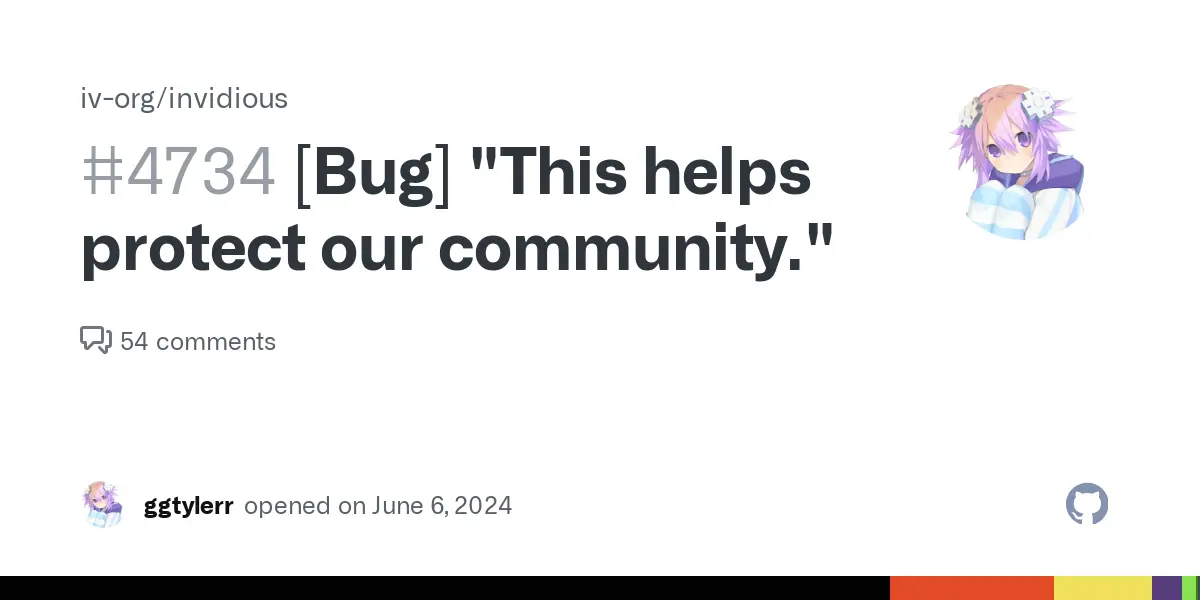- cross-posted to:
- [email protected]
- [email protected]
- technology
- cross-posted to:
- [email protected]
- [email protected]
- technology
cross-posted from: https://discuss.tchncs.de/post/22423685
EDIT: For those who are too lazy to click the link, this is what it says
Hello,
Sad news for everyone. YouTube/Google has patched the latest workaround that we had in order to restore the video playback functionality.
Right now we have no other solutions/fixes. You may be able to get Invidious working on residential IP addresses (like at home) but on datacenter IP addresses Invidious won’t work anymore.
If you are interested to install Invidious at home, we remind you that we have a guide for that here: https://docs.invidious.io/installation/..
This is not the death of this project. We will still try to find new solutions, but this might take time, months probably.
I have updated the public instance list in order to reflect on the working public instances: https://instances.invidious.io. Please don’t abuse them since the number is really low.



I would suggest the devs to be able to create instances from within tor. It would be slow, but impossible to block. Or from any other network that don’t rely on single IP access to YouTube . Or, make a mesh of collaborative home instances. Google can’t block millions of home IPs. Or use any mesh collaborative network capable of it.
TOR exit node IP addresses are well-known. If YouTube wants to, they can just block the TOR network.
Good question why they didn’t already or if they did it already
Piped extractor already did this by implementing ipv6 rotator
Is it possible to add it by invidious ?
Don’t know